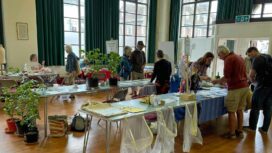The most ambitious survey ever of the network of hedgerows from Swanage to Wareham has started, as part of the Great Big Dorset Hedge project.
The aim is for volunteers to create a continuous chain of hedgerows throughout Dorset – more than twice as long as Hadrian’s Wall – restoring the natural habitat for wildlife.

Purbeck’s first volunteers begin the task of checking 30 miles of hedges, starting in Stoborough. From left: Andy Abbott, Ian Duckworth, Richard Ealey, Karen Duckworth, Jane Wellwood and Sharron Abbott
The Great Big Dorset Hedge route across Purbeck
The environment group Dorset Climate Action Network (DorsetCAN) is behind The Great Big Dorset Hedge campaign and has received a grant from Dorset Area of Outstanding Natural Beauty (AONB) to help fund the project.
While work has begun, the project is described as long term and will perhaps take a generation to complete.
The two stretches of hedgerows in Purbeck targeted for restoration as part of the route, are the Purbeck Way and the Wareham Forest Way.
The Purbeck Way route has two spurs from Swanage and Worth Matravers, joining up at Corfe Castle then continuing through Furzebrook, Creech Bottom and Stoborough, before heading into Ridge and Wareham.
The Wareham Forest Way leaves town through Coldharbour and skirts Lytchett Matravers through East Morden before going through Sturminster Marshall and joining the Stour Valley Way.
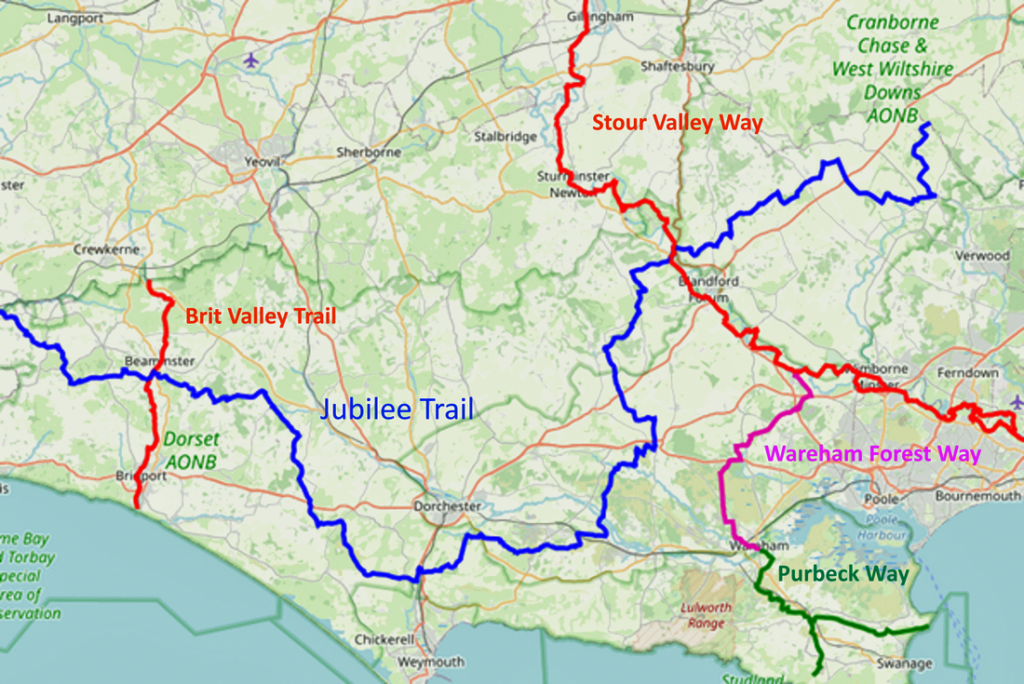
Map of the Great Big Dorset Hedge project showing the route of the hedges to be restored
30 miles of hedgerows need to be surveyed
Hedges along the 30 mile routes of the combined Purbeck Way and Wareham Forest Way are to be surveyed over the coming months to find out exactly what state they are in and what work needs doing to repair or replant them.
In some places, there are neatly laid willow hedges which support a host of plant, animal, insect and bird life, which all contribute to the natural health of the countryside.
In other places, sections of hedge are missing, or have been cut back so ferociously that while they still function as boundaries, little else will live or grow there.
Part of the work will be to record the dozens of different species of wildlife along the hedge network, as well as all the trees and shrubs.

Ian Duckworth is looking for more volunteers to help with the hedge project
Creating wildlife corridors through Purbeck
Ian Duckworth, Purbeck co-ordinator for the Great Big Dorset Hedge project and Stoborough resident said:
“One of our main aims is to create continual wildlife corridors through Purbeck’s hedgerows which link woodlands, fields, rivers and even gardens which animals can use to move along safely out of the sight of predators.
“There’s also shelter and food for small mammals or frogs and toads, while thick hedges provide an ideal habitat for nesting birds, giving protection and also being near food sources.
“And they are a perfect habitat for insects which are essential to all food chains and are also responsible for pollinating almost all of our crops – but without hedges, and with increased use of pesticides, the whole ecology is threatened.
“There are so many benefits that creating and caring for hedgerows can have for the countryside – they can protect against flooding and soil erosion, give shelter and food to our wildlife and help to combat air pollution.”
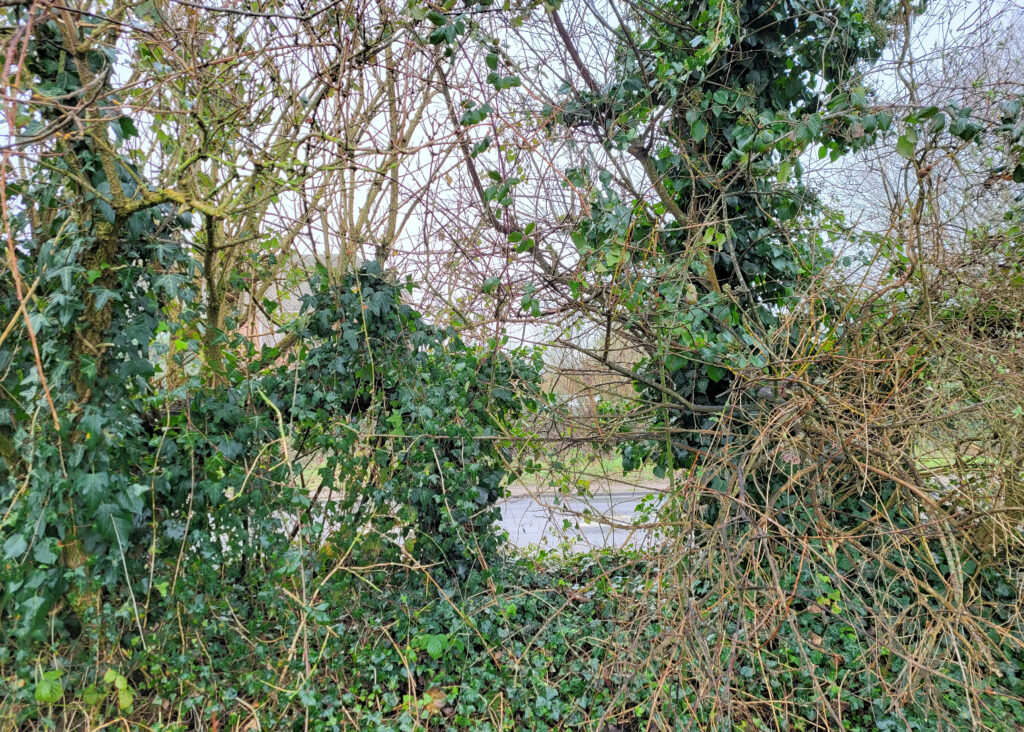
Many dying hedges are in need of filling, or even replanting
Up to 50 percent of hedgerows lost since 1945
In the last century, tens of thousands of miles of ancient hedgerow across the UK have been removed to make way for larger fields, more intensive agriculture and roadways, and many of the remaining hedges are in an increasingly poor condition.
Because of rising costs, farmers and landowners commonly use mechanised hedge cutters which can damage hedgerows, especially if done annually without allowing for larger branches or occasional stand-alone trees to grow.
Up to 50 percent of Britain’s hedgerows have been lost since the end of World War Two as the country was encouraged to become more efficient at producing crops with larger fields, pesticides and bigger machinery.
The decline is still under way, so now the health of Purbeck’s hedges will be mapped lane by lane.
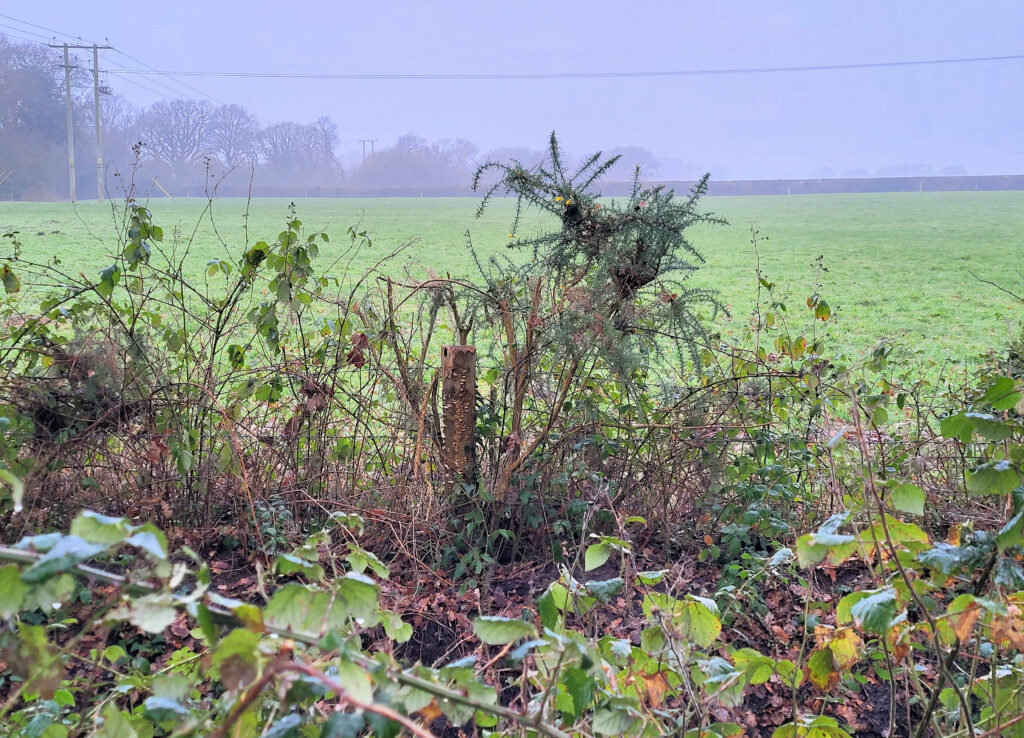
Brambles and gorse are taking over a fence to create a fedge
Fedges are created where fence meets hedge
Each 25 metre stretch of hedge will be measured for average height and width, graded according to condition and health, plotted with its boundaries, and notes taken on the variety of species making up the hedge.
They will be graded according to whether they are newly regenerated hedges, mature and well-kept hedges, or those which have been allowed to decline, degrade and die.
There is also a newly created category of boundary where wild plants like bramble, dogrose and ivy have started to take over fences – they’re called fedges.
At the same time, other Dorset volunteers will be working on the Jubilee Trail from Forde Abbey on the Somerset border to Bokerley Dyke on the edge of Hampshire, the Stour Valley Way from Stourhead through Blandford Forum, Wimborne Minster and on to Christchurch, and the Brit Valley Way from West Bay to Chedington along the Jurassic Coast.
Between them, 190 miles (300 kilometres) of hedgerows in Dorset will be walked, surveyed, mapped, restored and replanted in an ecological project like no other – for reference sake, Hadrian’s Wall built by the Romans across their northern border with Scotland is only 73 miles long.
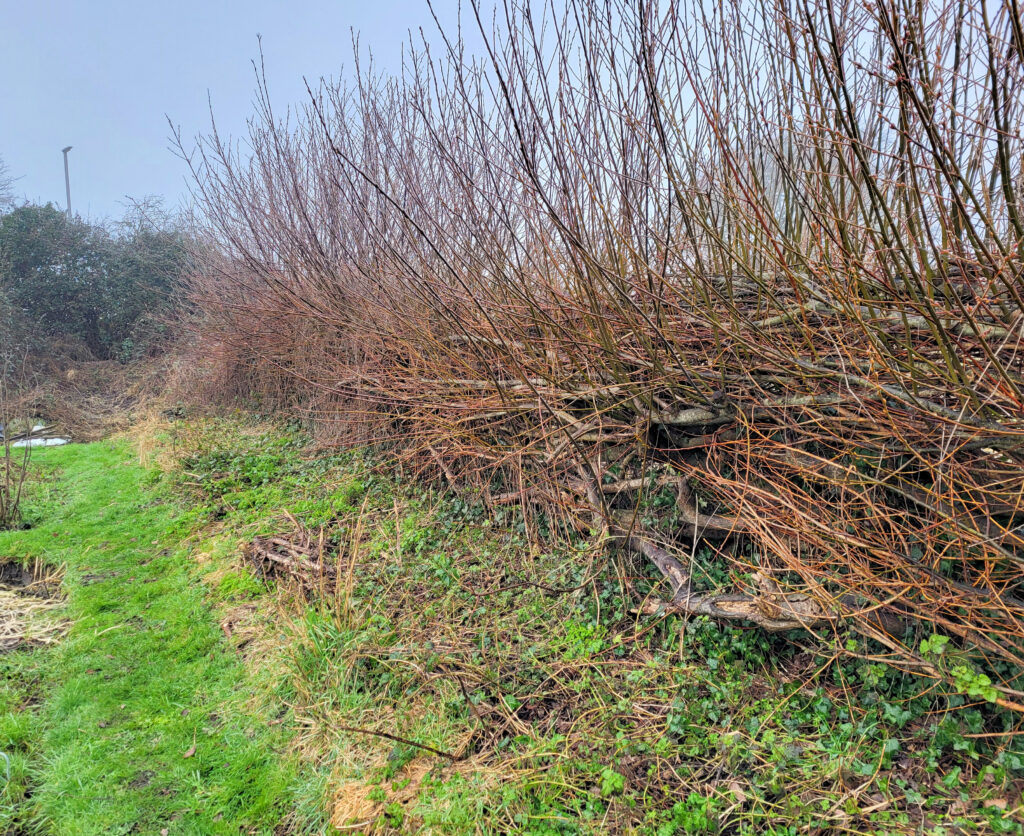
The aim is to join up hedgerows right across Dorset as wildlife corridors
Government hedge fund to rewild the countryside
The project was boosted at the beginning of January 2023 when the government announced an increase in funding for farmers for countryside stewardship, including more money for hedging.
The Defra hedge fund hasn’t been quantified, but is part of a pot of cash expected to be worth up to £800 million a year by 2028 to help farmers rewild their land.
By 2042, the government says it wants 300,000 hectares of England covered by new landscape recovery projects, an area larger than the whole of Dorset itself.

Measuring the height and width of hedges is an important part of the survey
“A hedge in good condition is a valuable asset”
Ian Rees, Dorset’s AONB countryside officer, said:
“Hedgerows are an integral part of the landscape and, as well as providing a network for wildlife to thrive in and move along, they also play important roles in locking up carbon, intercepting flood water, supporting pollinators and improving people’s experience of the countryside.
“A hedge in good condition is therefore a very valuable landscape asset. Dorset CAN’s focus on hedgerows and their management through the Great Big Dorset Hedge project is very welcome, particularly the robust survey of hedgerow condition that will allow us, and others, to get a clearer picture of where help is needed.
“This can then be followed up with landowners to offer help and support in planting and managing their hedges, and continue the investment in this important part of our special landscape.”

It is hoped that some neglected parts of Purbeck’s lanes may be improved
Most ambitious hedgerow expansion in the UK
The Great Big Dorset Hedge project is thought to be the most ambitious expansion of hedgerow in the UK.
More volunteers and co-ordinators are now being sought in Purbeck to join the teams to walk the hedgerows and start the process of reporting their health and bringing them back to top condition.
Dozens of people are needed to join in to assess the current condition of hedges over approximately three-hour sessions, and will be given tools and training to do the job.

Purbeck’s volunteers check out a coppiced hedge in top condition at Stoborough
Project may take a generation to complete
Jenny Morisetti, from DorsetCAN, said:
“What we are hoping to do is fill in the gaps in the existing hedgerows to create a footpath for the natural world. The idea is that insects and other wildlife will be able to move around more freely with cover without fear of predators and be more resilient to pesticides.
“This network of healthy hedgerows will increase biodiversity and create wildlife corridors linking habitats. It’s a big project, ambitious and long-term but we hope it will bring communities together.
“We need volunteers to survey the existing hedgerow so we can identify the gaps that need filling in. Many landowners are already doing a great job managing their hedgerows. Our aim is to survey and then work with landowners to restore where needed and fill in any gaps.
“It is a big undertaking and it may take a generation for it to stretch the length and breadth of the county.”
Further information
- To find out more about the project and join up as a volunteer, go to the Dorset Climate Action Network website


